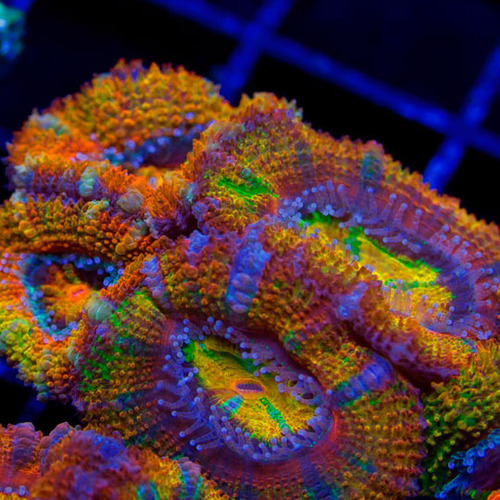This weeks Featured Coral of the Week comes to us from one of our sponsors, Joe Knows Reefs.
As featured above, Combo Joe’s Retina Blaster and Fukushima Acan give a visually appealing display involving every color of the rainbow. Speaking about this stunning Australian Acanthastrea, Joey Nichols tells us that it has been in his grow out system for about 6-7 months thriving best under conditions of low water flow and low to moderate lighting conditions.
In the reef aquarium, Acanthastrea corals are very hardy and fast growing. They are some of the most ideal corals for fragging with a quality frag saw. Like many aquarists, coral farmers and coral importers, Joey uses the Gryphon Aquasaw to cut through the hard skeletons of these corals.
Acanthastrea Lordhowensis Traits
Acanthastrea generally have large corallites ranging from 8-15 mm. In Australia, Acanthastrea are mostly found in shallow lagoons and water depths to about 65 feet (20 meters). In their natural environment these colonies may grow to measure several meters across. Although not as aggressive as acan echinata, acan lordhowensis has the ability to sting and digest other corals in close proximity by extending their mesenterial filaments at night. For this reason you should always pay close attention when placing these corals in the aquarium and continue to monitor them as they grow into colonies.
For faster growth rates, target feed polyps 1 or 2 times per week while the circulation pumps are turned off. Like all acans, the Retina Blaster and Fukushima Acan Combo will accept meaty foods, zooplankton and pelletized LPS foods. You can see the WYSIWYG at Joe Know Reefs.






